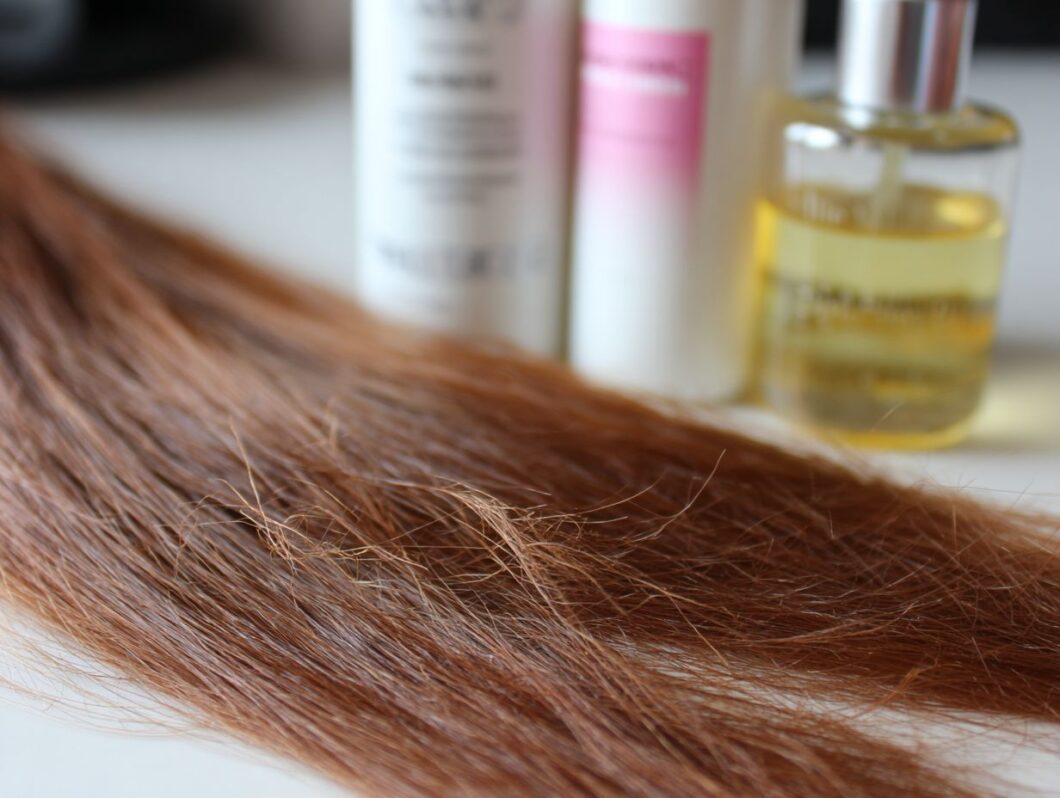Split ends can be a significant challenge for anyone striving to maintain healthy, beautiful hair. I believe that understanding the science behind their occurrence is the first step toward effective prevention. In this article, I will explore the structure of hair, discuss healthy habits and protective hairstyles, and share effective at-home remedies alongside professional treatments. Additionally, I will provide long-term hair care tips to help avoid common pitfalls. With this knowledge, you can say goodbye to split ends and welcome vibrant, resilient hair into your life.
Key Takeaways:
The Science of Split Ends
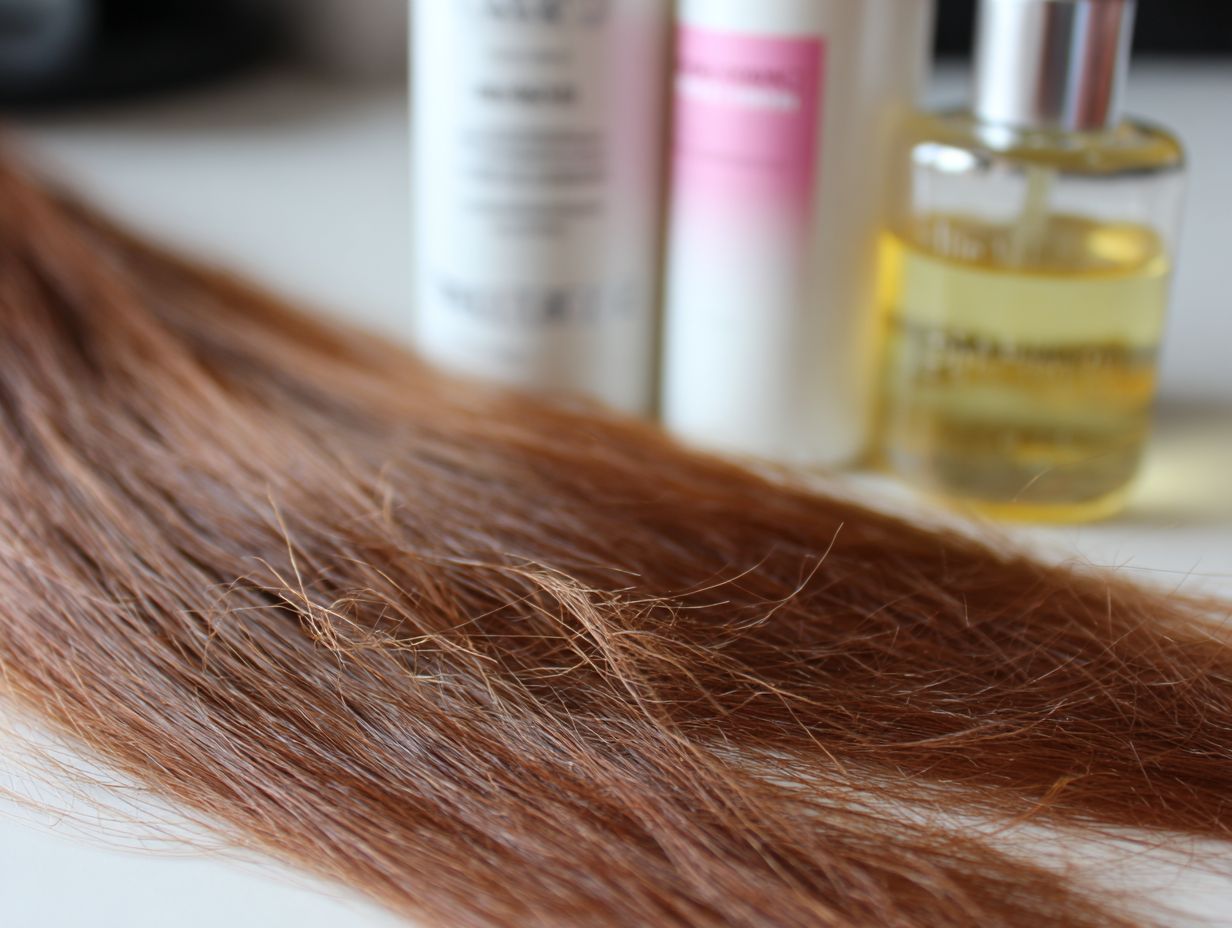
Understanding the science behind split ends is essential for effective hair care. These common issues can arise from various factors, including damage repair, improper hair care techniques, and environmental influences.
Split ends occur when the protective outer layer of the hair cuticle becomes damaged and frayed, resulting in splits at the end of the hair shaft. This condition can be exacerbated by elements such as heat styling, chemical treatments, and inadequate maintenance. For a deeper insight into this, a recent publication by MDPI discusses how cosmetic procedures impact hair health, offering valuable information about the underlying causes of hair damage.
Therefore, it is crucial for me to engage with a trichologist or hair care professionals, such as those at Wella in Dubai, to develop a personalized hair care routine that addresses my unique needs, including the use of a nourishing shampoo and essential hair oil.
Understanding the Causes and Structure of Hair
The structure of hair is quite complex, consisting of three main layers: the cuticle, cortex, and medulla. Each of these layers plays a crucial role in the overall health and appearance of hair, and understanding this structure is essential for effectively addressing issues such as split ends.
The cuticle, being the outermost layer, serves as a protective barrier for the more delicate inner layers against environmental damage, heat, and chemical treatments. When the cuticle suffers damage from excessive heat styling, over-processing, or harsh weather conditions, it can result in frizz and split ends, ultimately compromising the integrity of the hair.
To combat these issues, I find that utilizing specially formulated hair care products, like the ULTIMATE REPAIR Shampoo, can be highly beneficial. For instance, Wella’s range of nourishing shampoos and conditioners can help fortify the cuticle. As noted by the comprehensive entry on hair by Wikipedia, maintaining the cuticle not only ensures resilience against everyday wear and tear but also promotes healthy hair growth while maintaining a polished appearance.
Preventing Split Ends
I find that preventing split ends is entirely achievable when I adhere to a consistent hair care routine that prioritizes healthy hair habits and the use of appropriate products.
Utilizing a nourishing shampoo and scheduling regular trims is essential for maintaining overall hair health and preventing further damage.
Healthy Hair Habits
Maintaining healthy hair habits is essential for achieving vibrant, split-free hair. Key practices include regular trims, personalized hair care routines, and paying particular attention to the needs of dry and curly hair.
For example, I find that scheduling trims every 6 to 8 weeks can significantly minimize the risk of split ends, especially for those with textured hair. Establishing a customized hair care routine that includes moisturizing shampoos and hydrating conditioners is crucial, particularly for individuals with dry or curly hair, who typically require additional moisture and care.
Incorporating deep conditioning treatments and limiting excessive heat styling can further enhance hair health. The frequency of these practices may vary; curly hair types often benefit from washing less frequently to retain natural oils, while straight hair may tolerate more frequent cleansing. Understanding one’s hair type is vital for ensuring optimal hair care, a point emphasized by Healthline in their article on tips for healthy hair growth.
Protective Hairstyles
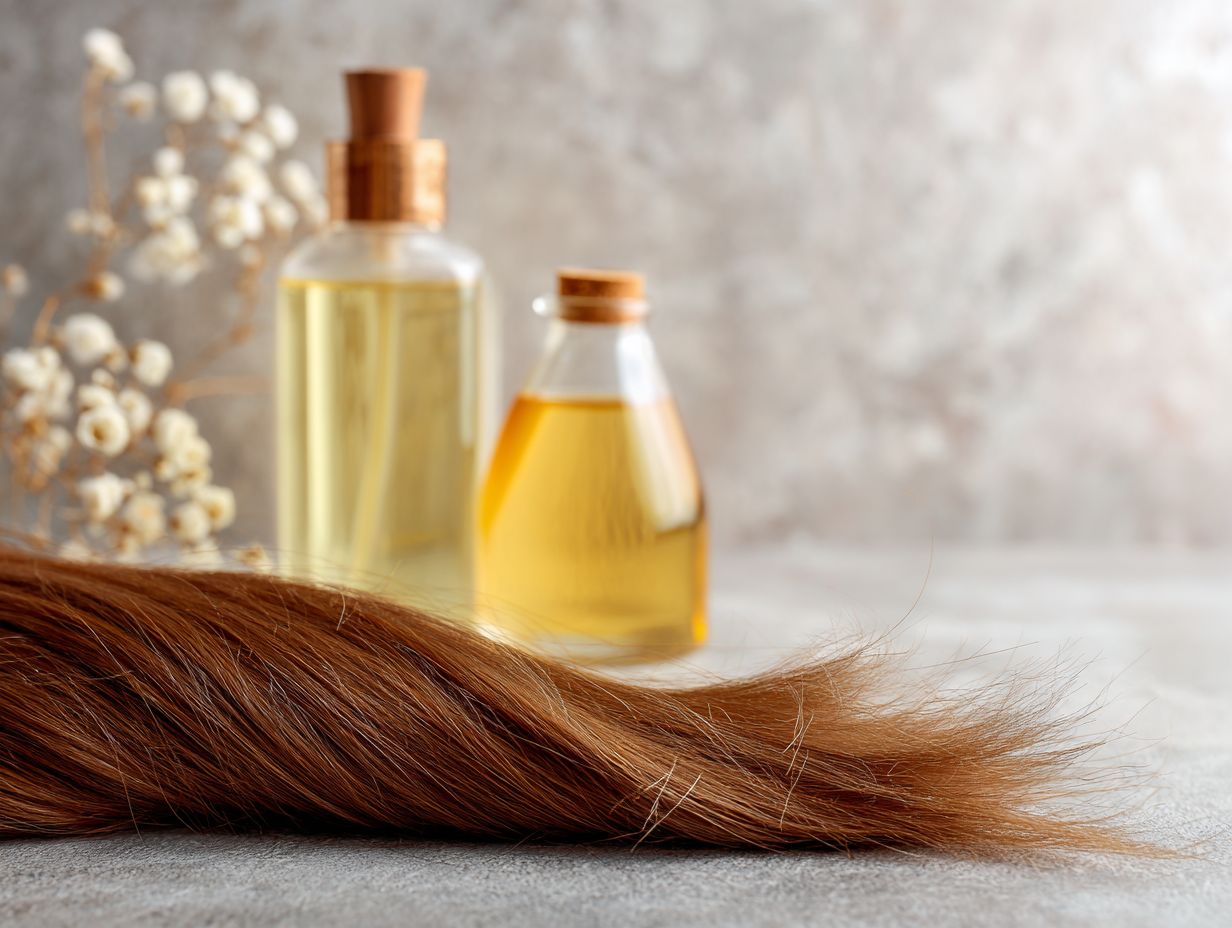
Adopting protective hairstyles is a proactive strategy I employ to prevent split ends. These styles effectively shield my hair from environmental stressors and minimize damage caused by styling tools.
By incorporating styles such as braids, buns, and twists, I create barriers that protect my hair from harsh weather, UV rays, and pollution. These methods not only reduce wear and tear but also decrease the necessity for frequent heat styling, which is a known contributor to hair damage, allowing the use of a heat protectant to be minimized.
Maintaining these hairstyles involves regularly moisturizing my hair and using gentle treatments that nourish and strengthen the strands. For example, I find that incorporating oils and leave-in conditioners enhances moisture retention, ultimately improving the overall texture and health of my hair.
Additionally, I ensure that my hairstyles are not too tight to prevent tension-related breakage and to keep my scalp healthy.
Treating Split Ends
Effectively treating split ends requires the use of specialized hair treatments, such as nourishing masks, protein treatments, and the ULTIMATE REPAIR Mask, which can restore hair health and manage the appearance of split ends.
I find products like Wella’s ULTIMATE REPAIR range, Hairlust Split Fix, and EIMI Flowing Form styling cream to be particularly invaluable in this process.
At-Home Remedies
At-home remedies for split ends can be highly effective when utilizing natural ingredients such as rosemary oil, nourishing hair oils, and the Split Fix Hair Oil that hydrate the hair. I also emphasize the importance of applying a weekly hair mask specifically designed for deep conditioning and repair.
By incorporating these straightforward yet potent treatments into my regular hair care routine, I can achieve healthier and smoother locks. Along with rosemary oil, I find that coconut oil is particularly beneficial due to its deep penetrating properties that help reduce protein loss. Argan oil is another great option, as it is rich in essential fatty acids that protect and soften hair strands.
Regularly using honey and olive oil masks can yield impressive results, as both ingredients provide moisture and shine.
I also recommend a blend of avocado and mayonnaise, which creates an excellent DIY treatment that adds vitality and makes hair easier to manage while minimizing split ends.
Consistency is essential; by committing to these remedies, I can achieve a noticeable improvement in my hair health over time.
Professional Treatments
I find that professional treatments are an excellent solution for those dealing with split ends, as they offer deep damage repair through specialized products like Wella’s ULTIMATE REPAIR Conditioner and ULTIMATE REPAIR Miracle Hair Rescue. These products can truly transform hair health.
These formulations utilize advanced technology to penetrate the hair shaft, delivering essential nutrients and moisture precisely where they are needed.
For example, Wella’s ULTIMATE REPAIR line features a unique combination of Silanols and Keratin, which work together to reinforce the hair structure and reduce the likelihood of future breakage. Treatments such as bond-building formulas can effectively restore the integrity of damaged strands, creating a protective barrier against environmental stressors.
By incorporating these professional treatments into my regular hair care routine, I can achieve smoother, healthier hair strands. This ultimately allows me to enjoy vibrant hairstyles without the constant concern of split ends.
Preventing Split Ends in the Future
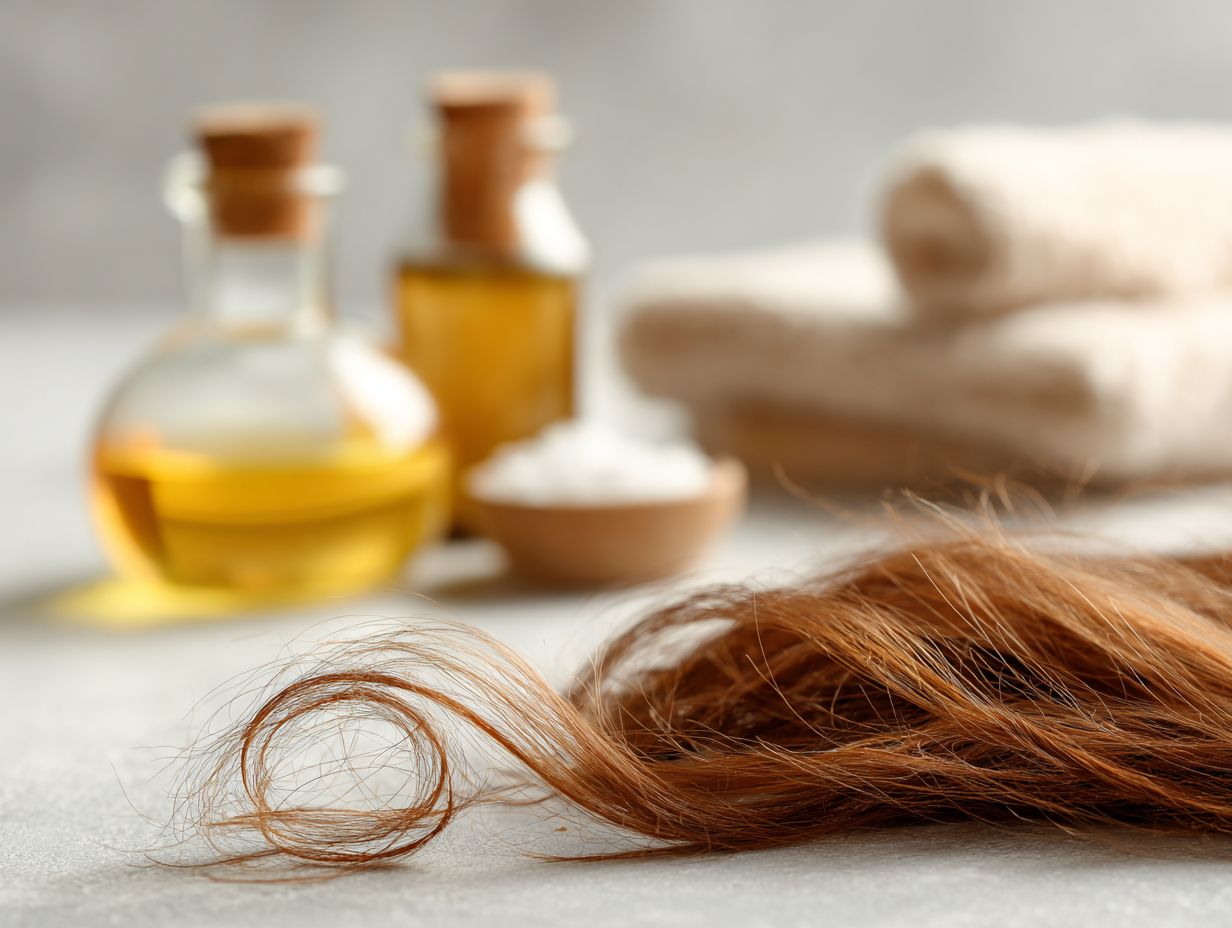
Preventing split ends in the future requires a commitment to long-term hair care strategies. I prioritize regular trims, mindful product use, and a thorough understanding of how hair growth cycles influence overall hair health, including techniques like meditation and yoga for stress reduction.
This approach ensures the longevity of my hairstyles and maintains the integrity of my hair.
Long-Term Hair Care Tips
Implementing long-term hair care strategies is crucial for preventing split ends. I prioritize using a microfiber towel for drying my hair, understanding the effects of chemical treatments, and selecting products that encourage healthy hair growth.
Establishing a consistent washing routine tailored to my hair type significantly enhances its overall health. I prefer sulfate-free shampoos and nourishing conditioners because they help with moisture retention and reduce breakage.
I also find it beneficial to limit the use of heat styling tools, allowing my hair to air dry whenever possible and applying heat protectant when styling is necessary. By trimming my hair every six to eight weeks, I not only maintain a revitalized appearance but also aid in the prevention of split ends.
Incorporating essential oils or serums rich in antioxidants into my routine helps preserve hair vitality and shine, offering a comprehensive approach to hair care.
Avoiding Common Mistakes
Avoiding common mistakes in my hair care routine is essential in the battle against split ends, such as neglecting the use of a bamboo pillowcase or silk pillowcase to reduce friction. Misuse of heat styling tools without a heat protectant, neglecting regular trims, and relying on harsh chemical treatments can significantly contribute to hair damage, making the use of Split Fix Hair Mask and ULTIMATE SMOOTH Miracle Oil Serum important.
Many individuals, including myself at times, tend to overlook the importance of these foundational practices, often prioritizing convenience over proper care. For example, when heat styling becomes a daily requirement, failing to apply a quality heat protectant can result in irreversible damage, making my strands more vulnerable to breakage.
A lack of awareness regarding product ingredients can lead to the use of shampoos and conditioners that contain sulfates and parabens, which strip away natural oils and worsen dryness of your hair. To combat this, consider using ULTIMATE REPAIR Shampoo and ULTIMATE REPAIR Conditioner for better results.
By adopting a mindful approach-selecting hair care products with nourishing ingredients like ULTIMATE REPAIR Mask and committing to regular salon visits for trims-I can dramatically improve my hair’s health and longevity.
Frequently Asked Questions
1. Why am I constantly experiencing split ends in my hair?
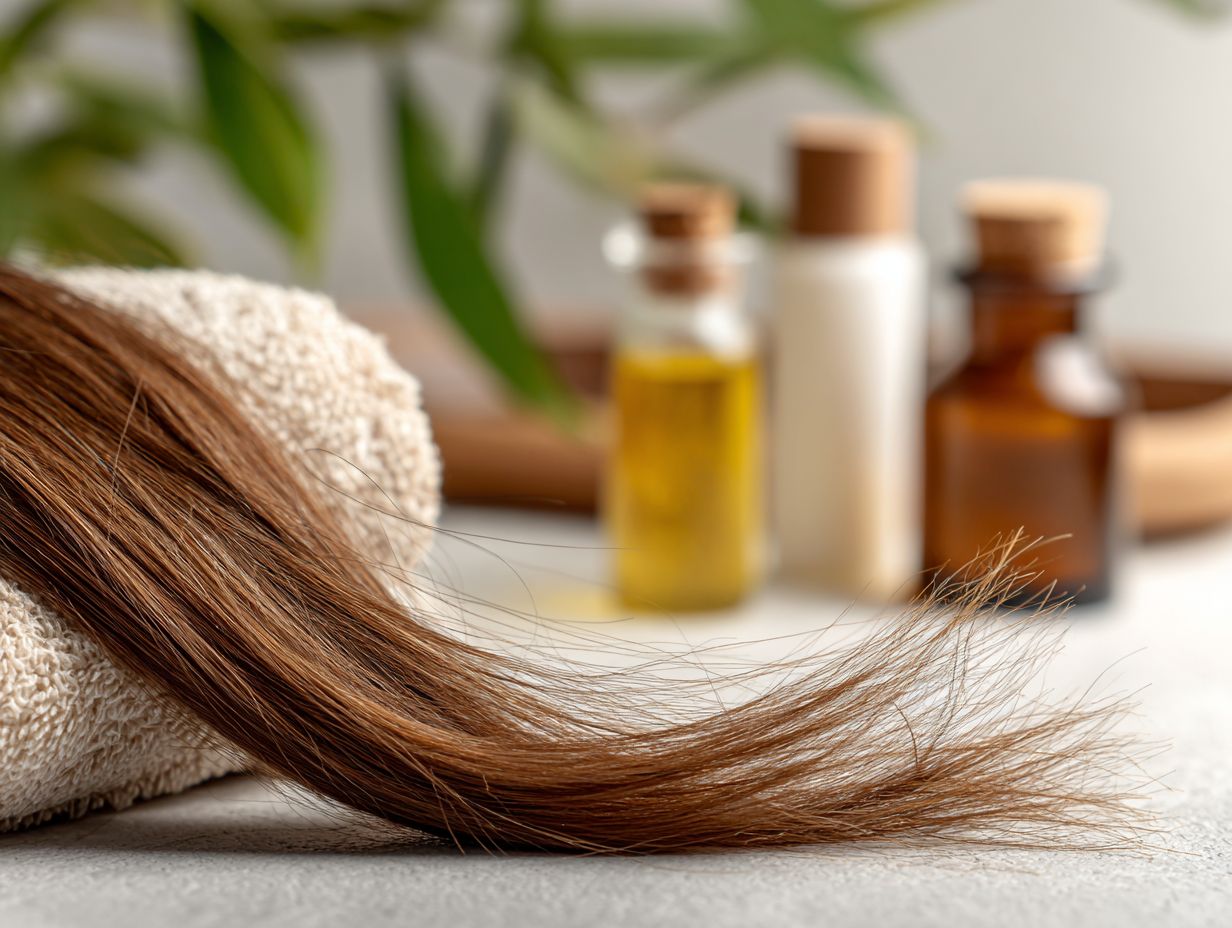
Split ends are a common problem in hair caused by a variety of factors such as frequent heat styling with hair styling tools, over-brushing, and lack of moisture. These activities can weaken the hair shaft and cause it to split, resulting in frayed ends. To manage split hair, consider using ULTIMATE REPAIR Miracle Hair Rescue.
2. How can I prevent split ends from happening?
The key to preventing split ends is to maintain the health and strength of your hair. This can be achieved by using a nourishing hair care routine with products like ULTIMATE REPAIR Protective Leave-In, avoiding over-processing or excessive heat styling, and getting regular trims to remove any existing split ends.
3. What are some natural remedies for treating split ends?
Some natural remedies for treating split ends include using a mixture of honey and olive oil as a deep conditioning treatment, applying aloe vera gel to the ends of your hair, and using a coconut oil hair mask like the Split Fix Hair Mask. These remedies can help to restore moisture and repair damaged ends, or you could use Split Fix Hair Oil for added benefits.
4. Can using certain hair products contribute to split ends?
Yes, certain hair products such as those containing sulfates, alcohol, and harsh chemicals can strip the hair of its natural oils and lead to dryness and breakage. To avoid this, try using Wella products that are designed to nourish your hair. It’s important to use hair products that are specifically designed to nourish and protect the hair, such as ULTIMATE SMOOTH Miracle Oil Serum.
5. How often should I trim my hair to prevent split ends?
It is recommended to get a trim every 6-8 weeks to prevent split ends and maintain healthy hair. You can also use EIMI Flowing Form to protect your hair. This will help to remove any damaged ends and promote healthy hair growth. If you are trying to grow your hair longer, you can stretch the time between trims to 10-12 weeks. Additionally, consider taking Hair Formula Supplements or Hair Gummies for better hair growth.
6. Is it possible to repair split ends without cutting them off?
Unfortunately, once a hair strand has split, there is no way to repair it. The best solution is to trim off the split ends and take preventative measures to maintain the health of your hair. Using ULTIMATE REPAIR Miracle Hair Rescue can help to prevent further damage. However, using nourishing hair products like ULTIMATE REPAIR Shampoo and minimizing heat styling can help to prevent further split ends from occurring. Drying your hair with a cotton t-shirt instead of a towel can also reduce damage.


